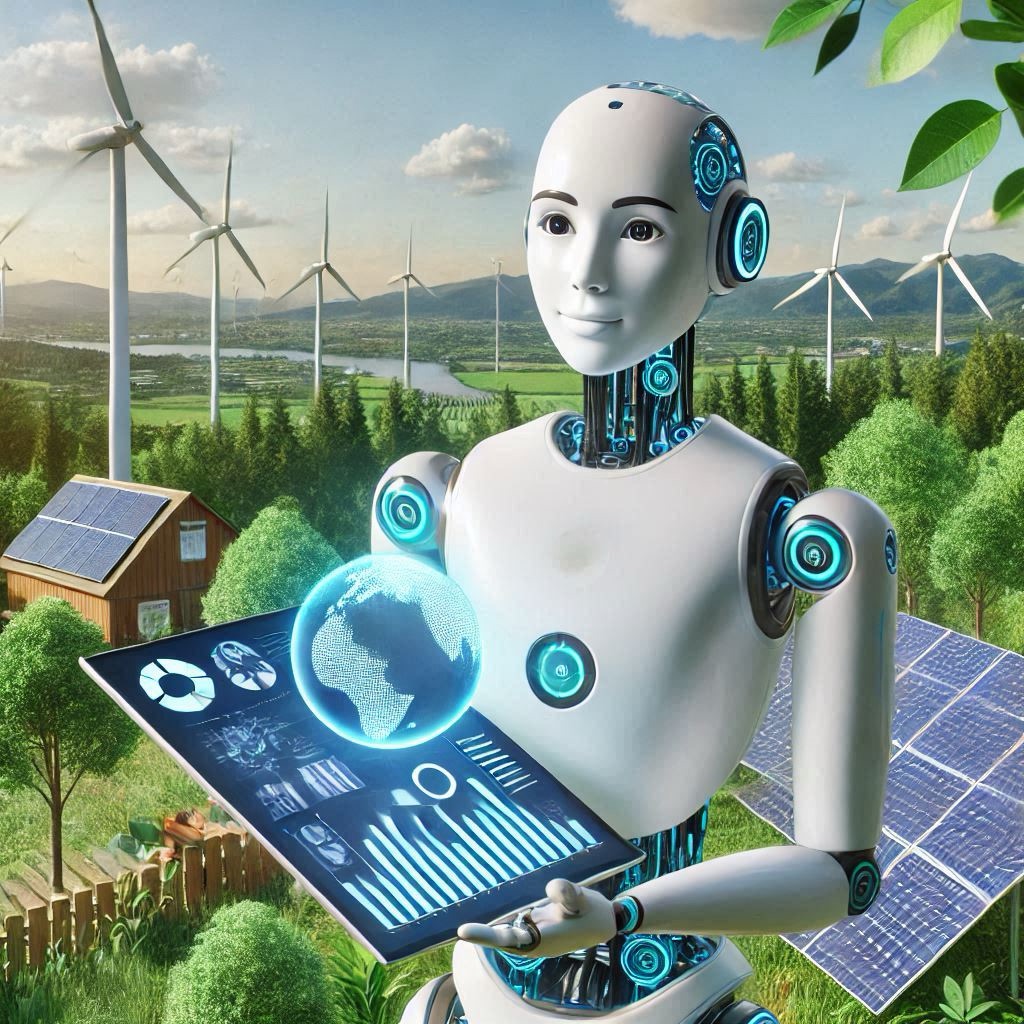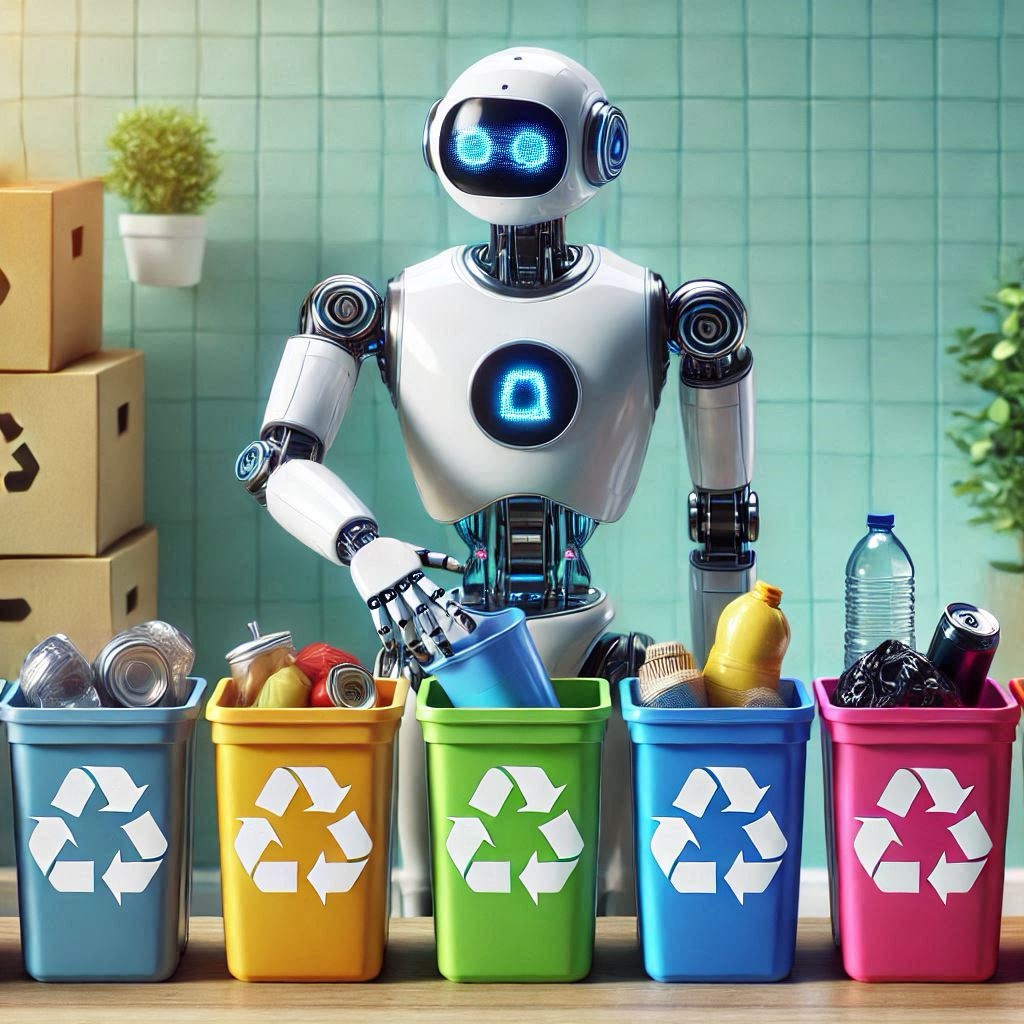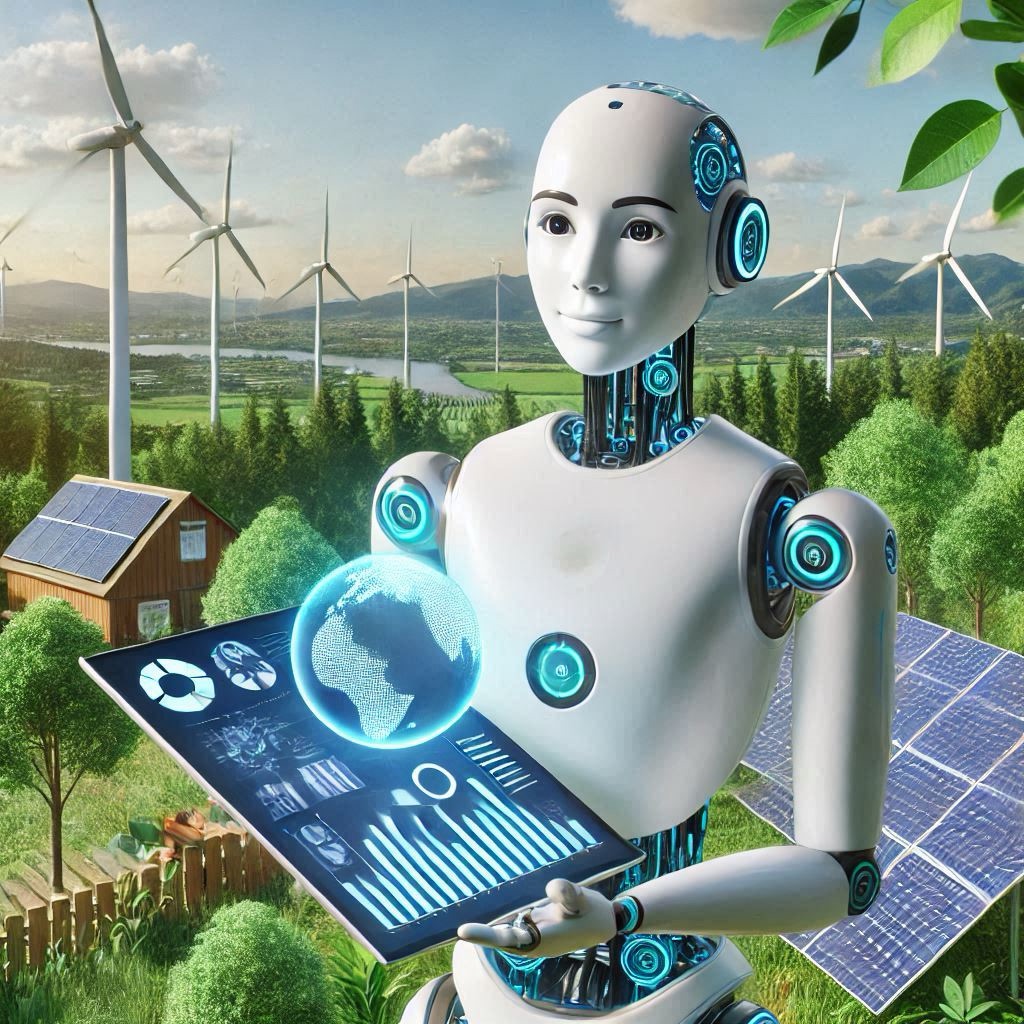Highlighting how AI is being used to monitor environmental changes, optimize renewable energy, and reduce carbon footprints.
Artificial Intelligence (AI) is playing a crucial role in addressing climate change by providing innovative solutions across various sectors. One significant application of AI is in optimizing energy consumption. AI systems can analyze energy usage patterns and predict peak demand times, allowing for better management of power grids and reducing unnecessary energy consumption. This leads to more efficient use of renewable energy sources and minimizes reliance on fossil fuels.

In agriculture, AI-powered systems are enhancing crop management by predicting weather patterns, monitoring soil conditions, and detecting pest infestations. This allows farmers to optimize their use of water, fertilizers, and pesticides, leading to more sustainable farming practices and reducing the environmental impact.
AI is also being used in climate modeling and prediction. Advanced algorithms analyze vast amounts of climate data to predict future climate scenarios with greater accuracy. This helps policymakers and researchers develop more effective strategies for mitigating the impacts of climate change.
One significant application is in renewable energy. AI-powered algorithms forecast weather patterns, enabling wind and solar farms to optimize energy generation and storage. Additionally, AI enhances the efficiency of smart grids, ensuring that energy is distributed and used more effectively, reducing waste.
1. Forecasting and Predictive Analytics
•Weather Prediction: AI analyzes historical weather data, satellite imagery, and real-time meteorological information to forecast wind speeds and solar radiation. These predictions help operators anticipate power generation levels and plan energy storage or grid distribution accordingly.
•Energy Demand Forecasting: AI predicts energy consumption patterns, enabling better alignment between renewable energy supply and demand.
2. Energy Storage Optimization
•Battery Management: AI algorithms determine the optimal times to charge or discharge energy storage systems, ensuring surplus power from wind and solar is stored efficiently and used during periods of low generation.
•Minimizing Waste: By balancing production and consumption, AI reduces the curtailment (wastage) of excess energy during peak production.
3. Real-Time Grid Management
•Dynamic Load Balancing: AI continuously monitors grid performance, dynamically redistributing energy to areas of high demand or adjusting supply to avoid overloading.
•Fault Detection: AI identifies and mitigates issues like voltage instability or power outages, improving reliability and efficiency.
4. Turbine and Panel Optimization
•Performance Tuning: For wind turbines, AI adjusts blade angles based on wind conditions. For solar panels, it optimizes tilt and orientation to maximize energy capture.
By integrating AI, renewable energy systems become smarter, more efficient, and better equipped to meet the challenges of modern energy grids.
Additionally, AI-driven technologies are improving waste management by optimizing recycling processes and reducing landfill waste. By analyzing waste patterns, AI can identify opportunities for more efficient recycling and waste reduction.
 Here’s how:
Here’s how:
1. Automated Waste Sorting
•Computer Vision for Recycling: AI-powered sorting systems use sensors and cameras combined with machine learning algorithms to identify and separate materials such as plastics, metals, and paper. This improves recycling rates and reduces contamination.
•Robotic Waste Pickers: Robots equipped with AI can sort waste faster and more accurately than humans, increasing operational efficiency.
2. Landfill Resource Optimization
•Capacity Management: AI analyzes data from sensors to monitor landfill levels, predict when capacity will be reached, and optimize the placement of waste to maximize space.
•Gas Harvesting: AI systems can monitor and optimize the capture of landfill gases like methane, converting them into renewable energy sources.
3. Reducing Waste Generation
•Predictive Analytics: AI helps industries and municipalities forecast waste production trends, enabling better planning for waste reduction initiatives.
•Behavior Insights: AI analyzes consumer behavior to identify areas where waste can be minimized, such as reducing packaging or encouraging recycling.
4. Smart Waste Collection
•Dynamic Routing: AI optimizes waste collection routes based on real-time data, reducing fuel consumption and carbon emissions. Sensors in bins notify collectors when they are full, ensuring timely pickups.
5. Waste-to-Energy Conversion
•Efficient Processing: AI enhances processes that convert organic waste into biogas or other energy sources, improving efficiency and minimizing residue.
By integrating AI, waste management systems become smarter, more sustainable, and capable of minimizing the environmental impact of human activity.
Overall, AI is a powerful tool in the fight against climate change, enabling smarter, more efficient, and sustainable practices across various industries. Its potential to drive positive environmental change continues to grow as technology advances.
